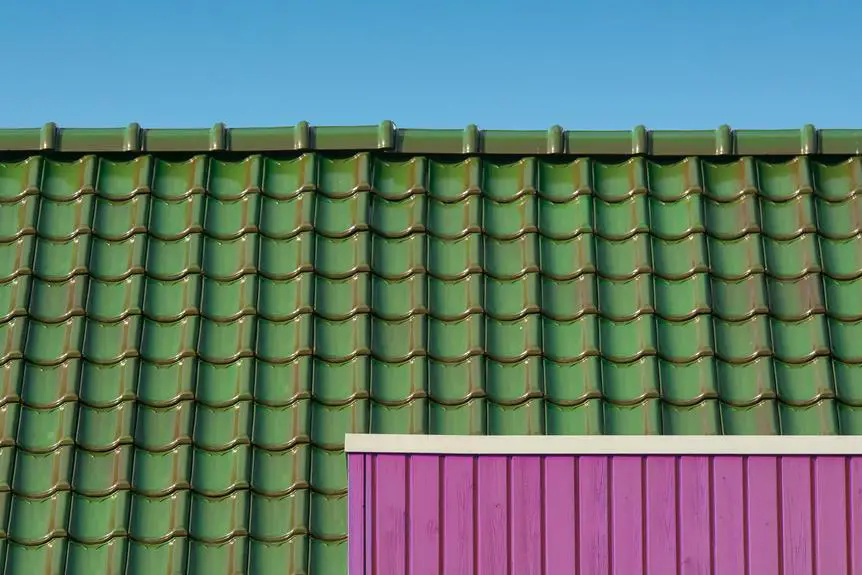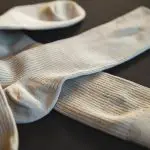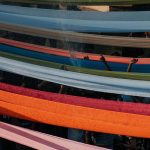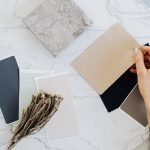Looking to keep your fabric safe from the elements? In this guide, you'll discover seven expert tips to make your fabric waterproof.
Whether it's your outdoor gear or favorite clothing, mastering the art of waterproofing can save you from a soaked surprise.
From choosing the right fabric to maintaining its protection, you'll learn the essential strategies to shield your fabric from water damage.
So, let's dive in and explore how to take your fabric waterproofing skills to the next level.
Key Takeaways
- Choose a tightly woven fabric like polyester or nylon for waterproofing.
- Use durable, waterproof fabrics like Gore-Tex or ripstop nylon for outdoor gear.
- Conduct fabric compatibility testing before applying waterproofing treatment.
- Follow the manufacturer's guidelines for application and choose the correct treatment for the fabric type.
Choose the Right Fabric
To make your fabric waterproof, choose a tightly woven fabric such as polyester or nylon. These fabrics are naturally water-resistant and provide a good base for waterproofing treatments.
When selecting appropriate materials, consider the intended use of the fabric. For outdoor gear or rainwear, a durable, waterproof fabric like Gore-Tex or ripstop nylon is ideal. For everyday items like bags or tablecloths, a less heavy-duty fabric may suffice.
Once you've chosen your fabric, it's essential to conduct fabric compatibility testing before applying any waterproofing treatment. This involves testing a small, inconspicuous area of the fabric with the waterproofing product to ensure it doesn't cause discoloration, damage, or adverse reactions.
Pre-Treat the Fabric
Before waterproofing your fabric, it's important to pre-treat it properly. Choose the correct treatment for the type of fabric you have and make sure to apply it evenly and thoroughly.
Once treated, don't forget to test the fabric for effectiveness before exposing it to water or moisture.
Choose Correct Treatment
Selecting the appropriate treatment for pre-treating your fabric is crucial in ensuring its waterproofing effectiveness. To choose the correct treatment, consider the following:
- Fabric Type: Different fabrics may require different pre-treatments to achieve optimal waterproofing. Ensure that the treatment you select is suitable for the specific fabric you're working with.
- Correct Application: Follow the manufacturer's guidelines for the application of the treatment. Proper application is essential for the treatment to bond effectively with the fabric and provide the desired waterproofing effect.
- Compatibility: Check the compatibility of the treatment with other fabrics or materials that may be present in the final product to avoid any adverse reactions or damage.
- Environmental Impact: Consider the environmental impact of the treatment. Opt for eco-friendly options that are safe for the environment and for your health.
Apply Evenly and Thoroughly
When applying the selected treatment to pre-treat your fabric for waterproofing, ensure that you distribute it evenly and thoroughly, as this step is crucial to achieving optimal waterproofing effectiveness. To achieve even coverage, use a spray bottle or paint brush to apply the treatment, ensuring that every part of the fabric is adequately covered.
Proper application is essential for the treatment to effectively bond with the fabric, creating a protective barrier against water. Take your time to work the treatment into the fabric, paying extra attention to seams, creases, and high-wear areas. Check for any missed spots and reapply as needed to guarantee uniform coverage.
Test for Effectiveness
To test the effectiveness of the pre-treatment for waterproofing your fabric, thoroughly wet a small section of the fabric and observe how the water interacts with it. Here are some key steps for field testing and durability assessment:
- Water Beads: Check if the water beads up on the surface of the fabric. This indicates that the pre-treatment is effectively repelling water.
- Absorption: Observe if the fabric absorbs water or if it remains on the surface. Minimal absorption shows that the pre-treatment is working well.
- Drying Time: Note how long it takes for the wet section to dry. A quicker drying time suggests better waterproofing.
- Repeat Testing: Repeat the process on different sections of the fabric to ensure consistent waterproofing across the entire surface.
Use Waterproofing Sprays
To effectively waterproof your fabric, start by using waterproofing sprays. Make sure to spray evenly to ensure full coverage, and always follow the manufacturer's instructions for the best results.
Spray Evenly for Coverage
Once you have chosen a waterproofing spray, evenly spraying the fabric will ensure complete coverage and effective waterproofing. To achieve this, follow these steps:
- Start by testing the spray on a small, inconspicuous area of the fabric to ensure compatibility and desired results.
- Hold the spray can approximately 6-8 inches away from the fabric surface to achieve even coverage.
- Use smooth, sweeping motions to apply the spray evenly across the entire fabric, ensuring no areas are missed.
- Pay special attention to seams, stitching, and creases to guarantee thorough protection.
Follow Manufacturer's Instructions
For proper application of waterproofing sprays, ensure you carefully follow the manufacturer's instructions to guarantee effective and long-lasting protection against water and moisture. Understanding the limitations of the specific product is crucial.
Some waterproofing sprays are designed for specific types of fabric, so it's important to check if the spray is suitable for the material you want to waterproof. Additionally, be mindful of the recommended application method and drying time. Seek professional guidance if you're unsure about any aspect of the process.
Professional advice can help you avoid potential mistakes and ensure that the waterproofing spray is applied correctly. By following the manufacturer's instructions and seeking professional guidance when needed, you can achieve optimal waterproofing results for your fabric.
Apply Waterproof Sealants
You can effectively waterproof your fabric by applying waterproof sealants to provide protection from moisture and water damage. To ensure the best results, follow these steps:
- Choose the Right Sealant: Select a waterproof sealant that's suitable for the type of fabric you're treating. Some sealants are designed for specific materials like nylon, polyester, or canvas, so make sure to read the label carefully.
- Clean the Fabric: Before applying the sealant, clean the fabric thoroughly to remove any dirt, dust, or stains. Use a gentle detergent and allow the fabric to dry completely before proceeding.
- Apply Evenly: When applying the waterproof sealant, ensure that you do so evenly across the entire surface of the fabric. Pay special attention to seams and stitching, as these areas are more prone to leakage.
- Allow for Proper Drying: After applying the sealant, allow the fabric to dry completely according to the manufacturer's instructions. This will ensure that the sealant forms a strong, protective barrier against water.
Consider Durable Coatings
Consider applying a durable coating to your fabric to enhance its waterproofing capabilities and longevity. When choosing a coating, consider alternatives that offer long-term effectiveness and durability. Look for coatings that are sustainable and eco-friendly, as this not only benefits the environment but also ensures that your fabric remains waterproof for an extended period.
Durable coatings provide a protective barrier that repels water, preventing it from seeping into the fabric. This extends the life of the fabric by reducing the risk of water damage, mold, and mildew. Additionally, durable coatings can withstand wear and tear, making them ideal for fabrics that are exposed to harsh weather conditions or frequent use.
When exploring coating alternatives, prioritize options that are known for their durability. Look for coatings that have been tested for their long-term effectiveness in waterproofing fabrics. By choosing a durable coating, you can ensure that your fabric remains protected from water and moisture for an extended period, reducing the need for frequent reapplications and maintenance.
Test for Effectiveness
Testing the effectiveness of your waterproofing method is essential to ensuring long-term protection for your fabric. To determine the success of your waterproofing efforts, consider the following testing methods and effectiveness standards:
- Water Beading Test: After applying the waterproofing treatment, observe how water behaves on the fabric. If the water forms beads and rolls off the surface, it indicates that the treatment is effective.
- Absorbency Test: Place a few drops of water on the fabric and observe if it absorbs the water or repels it. Effective waterproofing should prevent the fabric from absorbing water.
- Spray Test: Use a spray bottle to simulate rainfall on the fabric. If the water beads and runs off the fabric without seeping through, the waterproofing is effective.
- Durability Test: After applying the waterproofing treatment, subject the fabric to various conditions such as sunlight, washing, or abrasion to ensure that the waterproofing remains intact.
Maintain and Reapply Protection
To ensure the longevity of your fabric's waterproofing, it is important to regularly maintain and reapply the protective treatment. Proper maintenance and reapplication of waterproofing products can significantly extend the life of your fabric and ensure its continued effectiveness. Here are some key tips for maintaining and reapplying protection to your fabric:
| Maintenance Tips | Reapplication Frequency |
|---|---|
| Clean your fabric regularly | Every 6-12 months |
| Store fabric properly | After heavy use |
| Avoid high heat when drying | After washing |
| Inspect for wear and tear | When water stops beading |
| Use gentle, specialized detergents | As needed |
Regularly cleaning your fabric and storing it properly can help maintain the effectiveness of the waterproofing treatment. Additionally, inspecting for wear and tear and avoiding high heat when drying can prevent damage to the protective layer. Reapply the waterproofing treatment every 6-12 months, or more frequently if you notice that water no longer beads on the fabric. Utilize specialized detergents and reapply the treatment as needed to keep your fabric well-protected.
Frequently Asked Questions
Can I Use the Same Waterproofing Spray on Different Types of Fabric, or Do I Need to Buy Different Products for Different Fabrics?
You can use the same waterproofing spray on different fabric types, but it's best to check the product label for specific recommendations. This ensures the waterproofing effectiveness and helps with maintenance care for your outdoor furniture.
How Long Does the Waterproofing Effect of a Sealant or Spray Typically Last Before Needing to Be Reapplied?
The longevity of waterproofing depends on factors like fabric type, usage, and exposure to elements. Generally, sealants or sprays last from a few months to a couple of years before needing reapplication. Regular maintenance helps prolong effectiveness.
Are There Any Specific Care Instructions I Should Follow to Maintain the Waterproofing of My Fabric, Such as Avoiding Certain Cleaning Methods or Storage Conditions?
To maintain the waterproofing of your fabric, avoid harsh cleaning methods and store it in a dry place. Test its effectiveness periodically by sprinkling water on it. Follow these maintenance tips to ensure long-lasting waterproofing.
Can I Use Waterproofing Products on Outdoor Furniture or Other Non-Fabric Items?
You can use waterproofing products on outdoor furniture and other non-fabric items to protect them from moisture. Different materials may require specific products, so ensure you choose the right one for longevity of waterproofing.
Is There a Specific Test or Method I Can Use to Determine the Effectiveness of the Waterproofing Treatment on My Fabric?
To determine the effectiveness of your waterproofing treatment, conduct an effectiveness test by spraying water on the fabric. Watch for beading or absorption. Consider reapplying if water is absorbed. Experiment with different application techniques for waterproofing durability.
- Chemistry's Role in Fabric Production - July 25, 2024
- Moisture Management in Modern Fabrics - July 25, 2024
- Engineering Fabrics for Optimal Performance - July 25, 2024







